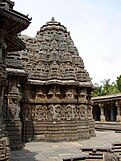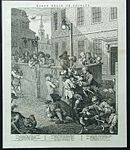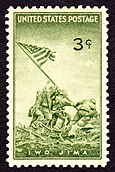Portal:Visual arts/Selected article
| This Wikipedia page has been superseded by historical reference. |
| Note: Article entries are now being transcluded directly on the main portal page. However, this page should be retained for historical reference. |
Click here to suggest/add an article.
Selected article 1
Portal:Visual arts/Selected article/1
The Four Stages of Cruelty is a series of four printed engravings published by William Hogarth in 1751. Each print depicts a different stage in the life of the fictional Tom Nero. Beginning with the torture of a dog as a child in the First stage of cruelty, Nero progresses to beating his horse as a man in the Second stage of cruelty, and then to robbery, seduction, and murder in Cruelty in perfection. Finally, in The reward of cruelty, he receives what Hogarth warns is the inevitable fate of those who start down the path Nero has followed: his body is taken from the gallows after his execution as a murderer and is mutilated by surgeons in the anatomical theatre.The prints were intended as a form of moral instruction; Hogarth was dismayed by the routine acts of cruelty he witnessed on the streets of London. Issued on cheap paper, the prints were destined for the lower classes. The series shows a roughness of execution and a brutality that is untempered by the humorous touches common in Hogarth's other works, but which he felt was necessary to impress his message on the intended audience. Nevertheless, the pictures still carry the wealth of detail and subtle references that are characteristic of Hogarth. (Full article...)
Selected article 2
Portal:Visual arts/Selected article/2
Early Buddhist art, followed the Indian
Buddhist art followed believers as the dharma spread, adapted, and evolved in each new host country. It developed to the north through
Selected article 3
Portal:Visual arts/Selected article/3
Despite its anatomical inaccuracies, Dürer's woodcut became very popular in Europe and was copied many times in the following three centuries. It was regarded as a true representation of a rhinoceros into the late 18th century. Eventually, it was supplanted by more realistic drawings and paintings, particularly those of
Selected article 4
Portal:Visual arts/Selected article/4
TheDespite having been founded without an existing royal collection on which to build, the National Gallery has grown to be a collection of international renown since its foundation in
Selected article 5
Portal:Visual arts/Selected article/5
Selected article 6
Portal:Visual arts/Selected article/6
The building is commonly dubbed as "The House With Chimaeras" because it contains various scenes depicting exotic animals and hunting scenes, as Gorodetsky was an avid hunter. It is situated on № 10, Bankova Street, across from the
The
Selected article 7
Portal:Visual arts/Selected article/7
For Warhol, a commercial
Selected article 8
Portal:Visual arts/Selected article/8

The vigorous temple building activity of the Hoysala Empire was due to the social, cultural and political events of the period. The stylistic transformation of the Karnata temple building tradition reflected religious trends popularized by the
Selected article 9
Portal:Visual arts/Selected article/9
of North America, from pre-European-contact times up to the present.Northwest Coast art is distinguished by the use of form lines, and the use of characteristic shapes referred to as ovoids, U forms and S forms. Before European contact, the most common media were wood (often
The patterns depicted include natural forms such as bears, ravens, eagles, and humans;
Selected article 10
Portal:Visual arts/Selected article/10
The Sistine Chapel ceiling, painted by Michelangelo between 1508 and 1512, is one of the most renowned artworks of the High Renaissance. The ceiling is that of the large Sistine Chapel built within the Vatican by Pope Sixtus IV, begun in 1477 and finished by 1480.Its various painted elements comprise part of a larger scheme of decoration within the
Central to the ceiling decoration are nine scenes from the
Guidelines
Selecting an article
There is no formal nomination process for adding a new article to the selected articles collection. Selected articles should highlight the strength and diversity of what the visual arts has to offer. While selections do not necessarily need to be FA or GA status, they certainly should not be stubs.
Suggest an article
Feel free to leave any suggestions for a selected article in this section. Comments are helpful. If you are feeling ambitious, the instructions for adding an entry to the selected article collection are outlined below in the "Adding an article" section. Any questions or disagreements about the appropriateness of an entry should be discussed on the talk page.
Nominations:
- Impressionism - the beginning of the modern rebels. --sparkitTALK 20:04, 9 March 2007 (UTC)
- Dutch Golden Age painting Thuresson (talk) 23:50, 22 January 2016 (UTC)
 Done I added these articles to the Selected article section of the portal (diff). North America1000 08:25, 15 July 2020 (UTC)
Done I added these articles to the Selected article section of the portal (diff). North America1000 08:25, 15 July 2020 (UTC)
Adding an article
- Go to Portal:Visual arts/Selected article/Layoutand grab the layout template.
- Go to the next available subpage (Portal:Visual arts/Selected article/n+1 - where n is the number of the topmost biography below, as it will be throughout these instructions).
- Paste the layout template into the subpage and fill in the appropriate fields.
- Go to the main portal page edit screen and find the following text. Look closely as there are other similar components on the page.
{{Random portal component|max=3|seed=37|header=''selected article''|
footer=More selected articles...|subpage=Selected article}}
- Change the max attribute from n to n+1. Save and you're done! Thanks for the contribution.






